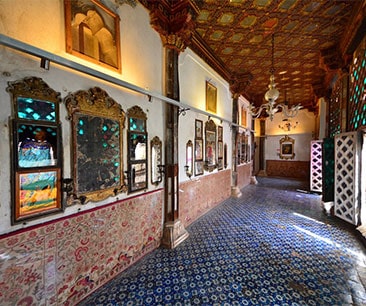Bhuj






Bhuj Tourism At A Glance
Bhuj is a city rich in history. Its history of monarchs and empires is extensive. It was called after Bhujang, a large snake that inhabited Bhujiyo peak, a peak that was later renamed. The population of Bhuj is roughly 200,000. It acts as a base from which to explore Kutch’s more isolated regions.
Bhuj can also be the starting point for day trips to places like Dhordo (the white Rann of Kutch with opulent tents for overnight stays), Khavda, Kala Dungar, Mandvi (a wind-powered seaside resort), Kera (ancient Hindu temple ruins dedicated to Lord Vishnu and Shiva), Mata No Madh (the goddess Aai Ashapura temple), Narayan Sarovar, Koteshwar (an old Hindu temple dedicated to Lord Shiva) and Haji Pir (a tomb).
Top Places in Bhuj

Prag Mahal
The enormous Prag Mahal, located in the same walled enclosure as the Aina Mahal. However, globalisation is hardly a brand-new development. Built in the heart of Bhuj, next to the Aina Mahal, this palace was commissioned by King Pragmalji in the 1860s. Colonel Henry Saint Wilkins designed it in the Italian Gothic style. There are elements, even though not much of it may seem Indian. Try to identify them. A modest Hindu temple with extremely finely carved stones may be seen in the courtyard behind the castle.

Aina Mahal
Built in 1752, this magnificent palace in Bhuj lost its top story due to an earthquake, but its lower level is still accessible to visitors and features a remarkable 15.2 m scroll depicting a Kutch state procession. One of the three buildings that make up the ancient town’s walled compound is the palace. The intricately mirrored interior from the 18th century, which features a candelabra with Venetian glass shades, tiling in blue and white Delphi style, and the Harding lithograph series The Rake’s Progress, is an example of the obsession with all things European and an inverted reflection of European Orientalism.

Shree Swaminarayan Mandir
One of the most amazing temples you will ever see in this region of the nation is the Swaminarayan Temple in Bhuj! Its completion took seven years starting on May 7, 2003, the day of the first brick installation ceremony. The new temple is oriented towards the east and is primarily made of premium marble, with a great podium serving as its foundation. With seven sky-touching pinnacles, this temple has an area of 35,000 square feet. It is made up of 258 pillars, 25 smaller domes, and one central dome. The heavenly beauty, tranquilly, and divine approach it is.

Kutch Museum
Maharao Khengarji established the Kutch Museum in 1877. He aimed to highlight the beautiful range of local crafts and way of life in the area. Gujarat’s oldest museum, located across from Hamirsar Tank, features interesting and varied exhibits of textiles, weapons, silverware, animals, geography and Kutch tribal costumes and antiquities in dioramas. The labels are in Gujarati and English. It has the greatest collection of Kshatrapa inscriptions that have been discovered, which date back to the first century AD. It also has remnants of the now-extinct Kutchi script. Examples of traditional crafts and antiques, tribal cultures, are on display.

Maa Ashpura Temple
The Ashapura Devi Mata Temple is situated in Gujarat’s Kutch district. The temple is located in bhuj, who is the Kuldevi of the Kuldevi of Jadeja. The original 1,200-0 years-old temple sustained numerous earthquake-related damages; Sunderji Saudagar created the temple that is still standing today, with a more opulent and better-sized edifice. Numerous additional religious holidays are observed, including Diwali, Navratri, and Holi. Ashapura Mata is one of aspect devi and one of the principle deity of Kutch. As the name indicates, she is the Goddess who fulfills the wish & desires of all those who trust and believe her.

Smritivan Earthquake Memorial Museum
Smritivan, which translates to “Forest of Memories,” is a massive 470 acres and is regarded as the largest memorial and museum ever constructed in modern India. It is located atop the little hill known as the Bhujiyo Dungar on the outskirts of Bhuj. It is situated in the same location as the over 300-year-old Bhujia fort. Smritivan was built as a haven for individuals who find comfort in nature, a site of pilgrimage, and a tribute to the tenacity and reverence of the Kutch people. It was constructed for the bereaved families of the earthquake victims from 2001. The memorial is made up of a Sun-Point that is perched atop Bhujiyo Dungar and provides views of the city, sunrises, and sunsets.





